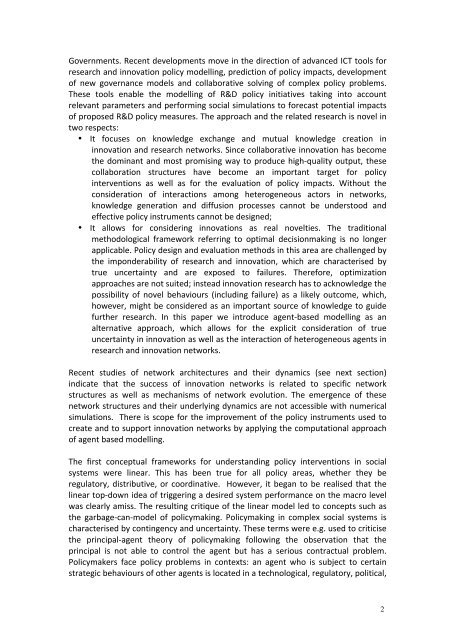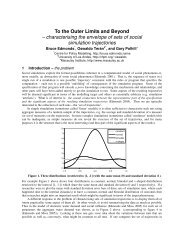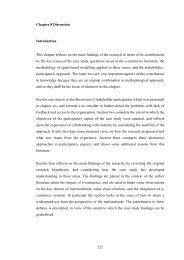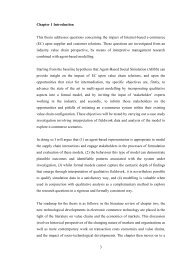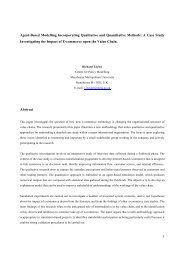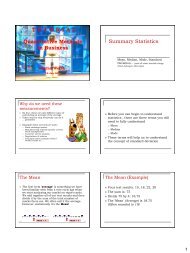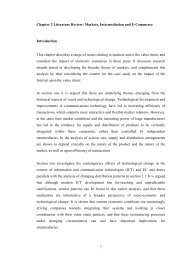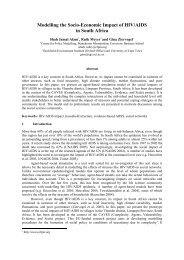Extended Abstract - Centre for Policy Modelling
Extended Abstract - Centre for Policy Modelling
Extended Abstract - Centre for Policy Modelling
You also want an ePaper? Increase the reach of your titles
YUMPU automatically turns print PDFs into web optimized ePapers that Google loves.
Governments. Recent developments move in the direction of advanced ICT tools <strong>for</strong> research and innovation policy modelling, prediction of policy impacts, development of new governance models and collaborative solving of complex policy problems. These tools enable the modelling of R&D policy initiatives taking into account relevant parameters and per<strong>for</strong>ming social simulations to <strong>for</strong>ecast potential impacts of proposed R&D policy measures. The approach and the related research is novel in two respects: • It focuses on knowledge exchange and mutual knowledge creation in innovation and research networks. Since collaborative innovation has become the dominant and most promising way to produce high-‐quality output, these collaboration structures have become an important target <strong>for</strong> policy interventions as well as <strong>for</strong> the evaluation of policy impacts. Without the consideration of interactions among heterogeneous actors in networks, knowledge generation and diffusion processes cannot be understood and effective policy instruments cannot be designed; • It allows <strong>for</strong> considering innovations as real novelties. The traditional methodological framework referring to optimal decisionmaking is no longer applicable. <strong>Policy</strong> design and evaluation methods in this area are challenged by the imponderability of research and innovation, which are characterised by true uncertainty and are exposed to failures. There<strong>for</strong>e, optimization approaches are not suited; instead innovation research has to acknowledge the possibility of novel behaviours (including failure) as a likely outcome, which, however, might be considered as an important source of knowledge to guide further research. In this paper we introduce agent-‐based modelling as an alternative approach, which allows <strong>for</strong> the explicit consideration of true uncertainty in innovation as well as the interaction of heterogeneous agents in research and innovation networks. Recent studies of network architectures and their dynamics (see next section) indicate that the success of innovation networks is related to specific network structures as well as mechanisms of network evolution. The emergence of these network structures and their underlying dynamics are not accessible with numerical simulations. There is scope <strong>for</strong> the improvement of the policy instruments used to create and to support innovation networks by applying the computational approach of agent based modelling. The first conceptual frameworks <strong>for</strong> understanding policy interventions in social systems were linear. This has been true <strong>for</strong> all policy areas, whether they be regulatory, distributive, or coordinative. However, it began to be realised that the linear top-‐down idea of triggering a desired system per<strong>for</strong>mance on the macro level was clearly amiss. The resulting critique of the linear model led to concepts such as the garbage-‐can-‐model of policymaking. <strong>Policy</strong>making in complex social systems is characterised by contingency and uncertainty. These terms were e.g. used to criticise the principal-‐agent theory of policymaking following the observation that the principal is not able to control the agent but has a serious contractual problem. <strong>Policy</strong>makers face policy problems in contexts: an agent who is subject to certain strategic behaviours of other agents is located in a technological, regulatory, political, 2


